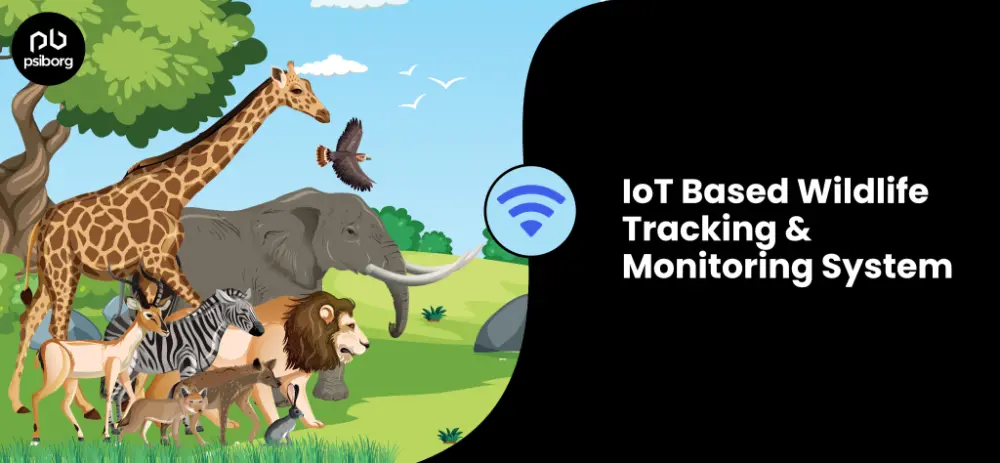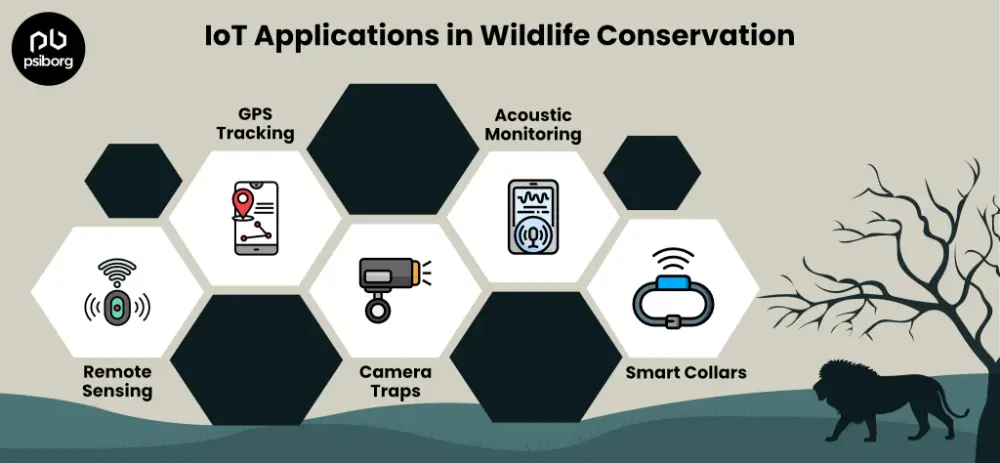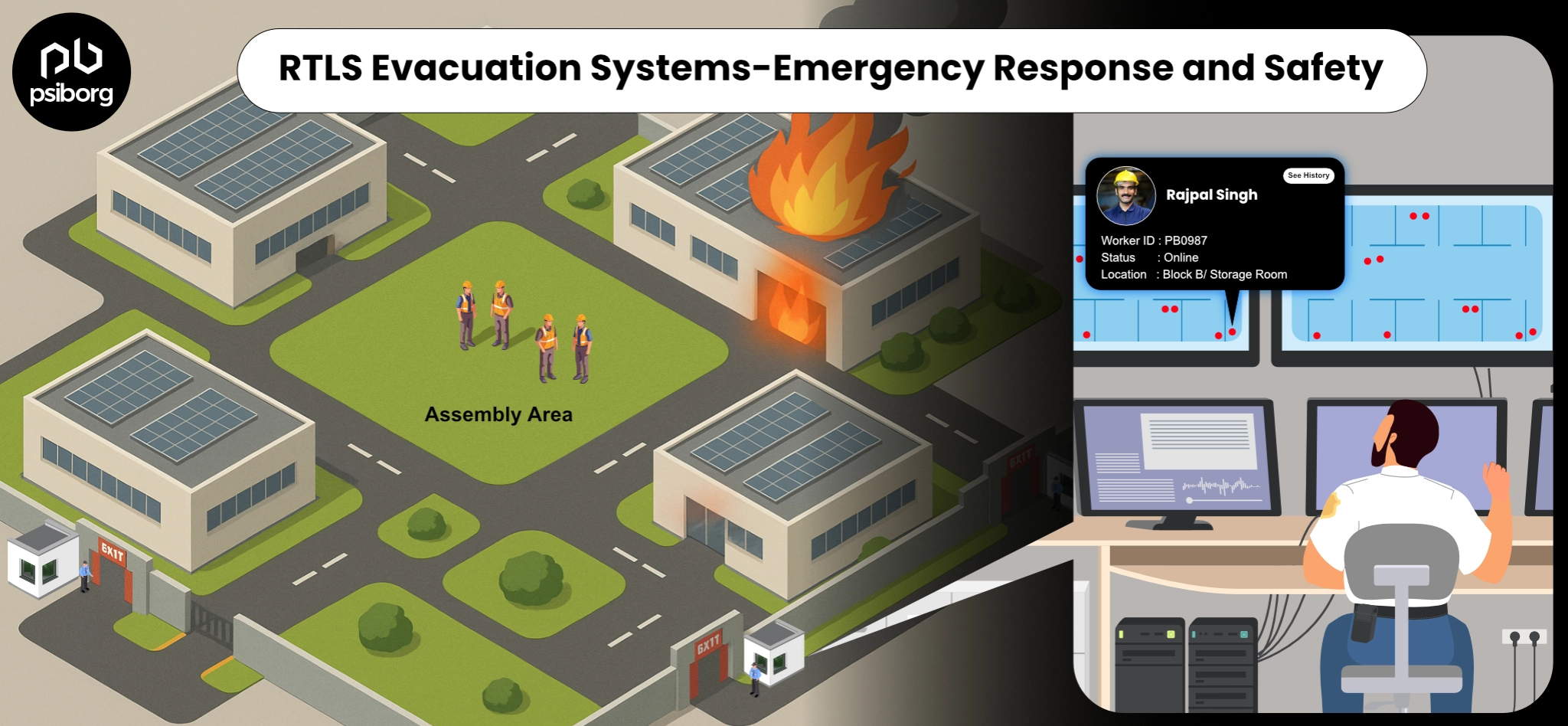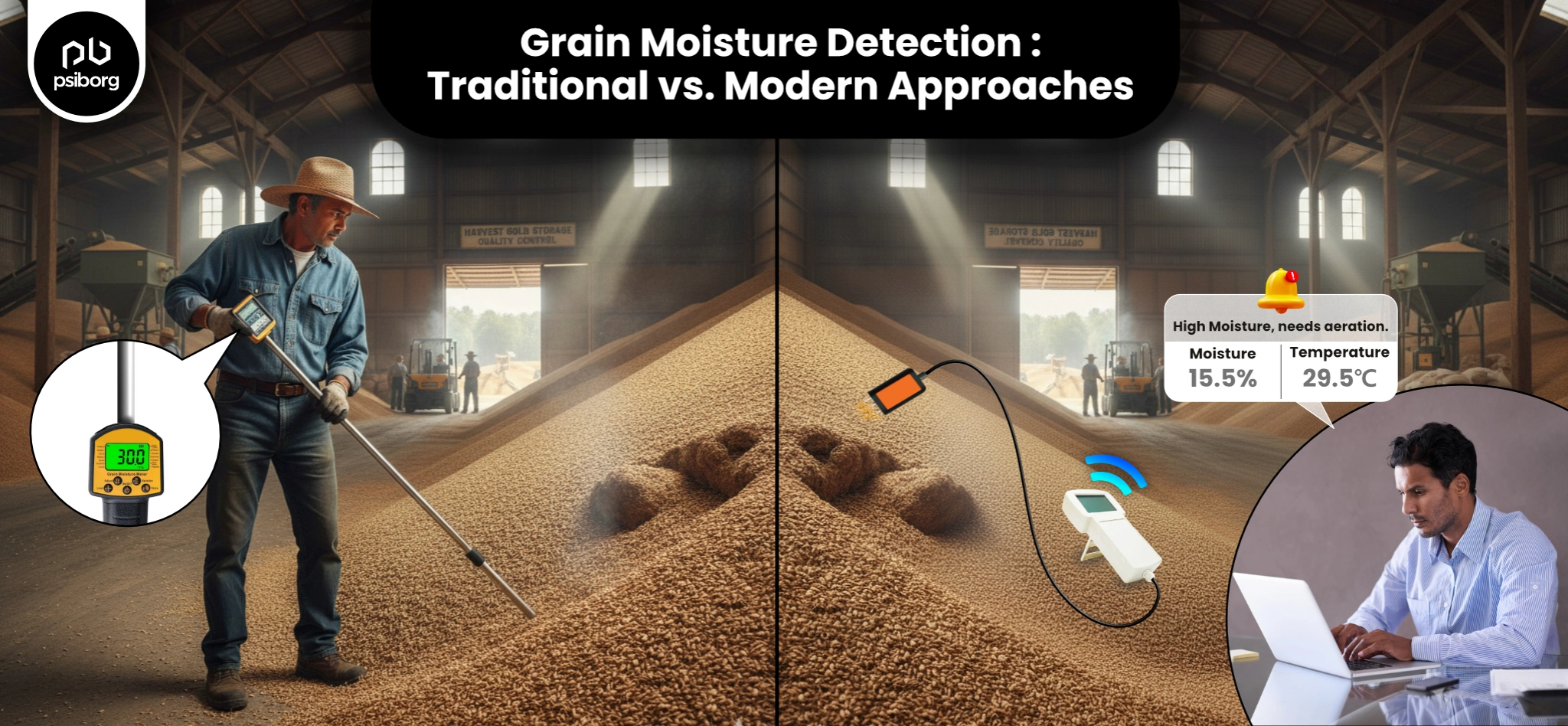The blend of technology and nature opens up exciting new paths for helping wildlife. Right now, the Internet of Things (IoT) is rapidly changing how we follow and watch animals. Consequently, this blog explores how IoT transforms conservation work, especially in wildlife tracking and monitoring system. By looking at different IoT applications in wildlife conservation, we will discover the many benefits and challenges that come with these advancements.

Key Parts of IoT for Wildlife Conservation
- Sensors: These devices collect real-time data from the environment, such as temperature, humidity, and movement.
- GPS Technology: GPS trackers attach to animals to monitor their movements and behaviours.
- Data Analysis: The collected data is analysed to reveal insights about wildlife patterns and habitat changes.
- Communication Networks: IoT devices send data to central systems, allowing for real-time monitoring.
Importance of Wildlife Tracking and Monitoring Systems
Wildlife tracking and monitoring system hold great importance for several reasons:
- Biodiversity Conservation: They protect many species from extinction by providing data that shape conservation strategies. As a result, this keeps ecosystems balanced.
- Understanding Animal Behavior: By following movements, researchers learn about migration patterns, breeding habits, and feeding behaviours. This way, they can better protect habitats.
- Preventing Human-Wildlife Conflict: Monitoring systems alert communities to the presence of dangerous animals, reducing conflicts and promoting safety.
- Data-Driven Decisions: Reliable data allows conservationists to make informed decisions about habitat preservation and restoration efforts. Additionally, this helps in long-term planning.
IoT Applications in Wildlife Conservation
Many IoT applications significantly boost wildlife conservation efforts. Specifically, here are some notable examples:

1. Remote Sensing
Remote sensing technology, powered by IoT, helps conservationists gather information from vast areas without needing human effort. Moreover, drones equipped with cameras and sensors can monitor wildlife populations and habitat conditions. For instance:
- Monitoring Endangered Species: Drones can provide aerial views of hard-to-reach habitats, helping researchers locate endangered species.
- Assessing Habitat Health: Sensors collect data on soil health, plants and temperature, providing insights into ecosystem health.
2. GPS Tracking
GPS tracking stands out as one of the most widely used IoT applications in wildlife conservation. By attaching GPS collars to animals, researchers gather important data on their movements. Some benefits include:
- Migration Patterns: Understanding migration routes helps in preserving habitats and planning better protection.
- Behavioural Studies: Data from GPS collars shows how animals interact with their surroundings, therefore revealing more about their needs.
3. Camera Traps
Camera traps serve as another effective tool for monitoring wildlife. In the context of IoT and wildlife conservation, these cameras, triggered by motion, capture images or videos of animals in their natural environment. The advantages include:
- Monitoring Rare Species: Camera traps document the presence of hard-to-find animals that are tricky to observe directly.
- Behavioural Insights: Footage from these cameras helps researchers study social behaviours and interactions among species. Thus, conservationists learn more about how animals live.
4. Acoustic Monitoring
Acoustic monitoring uses sound sensors to track wildlife. This technology shines when monitoring vocal species, such as birds and frogs. Specifically, the benefits include:
- Identifying Species Presence: By analysing sound patterns, researchers figure out which species live in a specific area.
- Studying Communication: Acoustic data reveals how animals communicate and interact with each other. Therefore, researchers get a deeper understanding of their social structures.
5. Smart Collars
Smart collars mix GPS technology with various sensors to provide complete data on animal health and behaviour. These collars can monitor:
- Heart Rate and Activity Levels: Changes in these numbers can show stress or illness in animals, allowing conservationists to act quickly.
- Environmental Conditions: Smart collars record temperature and humidity, offering insights into how environmental changes affect wildlife. Consequently, researchers understand what conditions are best for survival.
Enhancing Data Collection and Analysis
The use of IoT in wildlife tracking and monitoring system greatly improves data collection and analysis. Here’s how:
1. Real-Time Data Access
IoT devices allow conservationists to access real-time data, which helps them make quick decisions. For example:
- Immediate Response to Threats: If sensors detect a poaching incident, conservation teams can jump into action right away.
- Adaptive Management: Real-time data lets conservationists adjust their strategies based on current conditions. Thus, plans can change to fit the situation.
2. Data Integration
IoT connects different data sources, providing a full view of wildlife and habitats. This integration can include:
- Cross-Referencing Data: Combining GPS data with environmental sensors helps researchers understand how habitat conditions influence animal movements.
- Collaboration: Different organisations share data, making conservation efforts stronger. Because of this, the overall success rate improves.
3. Predictive Analytics
With advanced data analysis, conservationists use past data to guess future trends. This ability allows them to:
- Identifying Potential Threats: Predictive models help conservationists anticipate poaching incidents or habitat loss, keeping animals safer.
- Planning Conservation Strategies: Understanding future scenarios helps plan wildlife conservation wisely. Thus, resources are used more effectively.
Challenges in Using IoT for Wildlife Conservation
Even though IoT offers many advantages, it faces some challenges in wildlife conservation. Here are some key obstacles:
1. Data Privacy and Security
Like with any technology, data privacy and security remain critical concerns. Protecting sensitive information from unauthorised access is very important. For example:
- Poaching Risks: If poachers access location data, they could target endangered species.
- Confidential Research: Researchers need to protect their findings to keep sensitive ecosystems safe.
2. High Costs
Setting up a wildlife tracking and monitoring systems can get expensive. Costs include:
- Equipment Purchases: Drones, sensors, and GPS devices can carry high prices.
- Maintenance and Upgrades: Regular maintenance and software updates require additional resources. In this way, costs can add up.
3. Technical Challenges
Many conservationists may not have the technical skills needed to operate IoT devices. Therefore, overcoming these challenges involves:
- Training Programs: Investing in training helps staff use the technology properly.
- Partnerships: Collaborating with technology companies provides access to expertise and resources, thereby solving technical issues more easily.
4. Environmental Factors
Environmental conditions can affect how well IoT devices work. For example:
- Battery Life: Harsh weather can reduce battery performance, limiting how much data devices can collect.
- Signal Interference: Dense vegetation or remote areas may block signals, making data collection more difficult. In such cases, alternative solutions are needed.
Future Prospects for IoT in Wildlife Conservation
The future of wildlife tracking and monitoring system looks bright. Notably, here are some trends to watch:
1. Enhanced Sensor Technology
As sensor technology advances, we can expect even more accurate and reliable data collection. Innovations may include:
- Miniaturisation: Smaller sensors will make it possible to monitor even the tiniest species.
- Improved Durability: Stronger sensors will endure harsh environmental conditions better.
2. Increased Collaboration
Partnerships between conservation organisations, technology companies, and academic institutions will boost the effectiveness of IoT applications. Collaboration can lead to:
- Shared Resources: Pooling resources reduces costs and improves data collection efforts.
- Cross-Disciplinary Research: Combining various fields of study results in more complete conservation strategies. As a result, projects become more successful.
3. Greater Public Engagement
Raising awareness about the importance of wildlife conservation can drive public support for IoT initiatives. This engagement may involve:
- Educational Campaigns: Informing the public about the benefits of IoT in conservation fosters support.
- Citizen Science: Involving communities in data collection helps monitor wildlife and creates a sense of responsibility.
End Note
The blend of IoT for wildlife conservation opens up exciting possibilities for tracking and monitoring efforts. By using technology, conservationists make smart decisions that protect our planet’s precious wildlife. As we continue to innovate, the teamwork between technology and conservation will play a key role in ensuring a sustainable future for all animals.
In conclusion, Wildlife Tracking and Monitoring Systems serves as a powerful toolkit for tracking and monitoring wildlife. By addressing challenges and embracing future trends, we can make great strides in protecting the natural world.
FAQs
Wildlife animal tracking and monitoring involves using technologies like GPS, RFID, and IoT sensors to observe and gather data on animals in their natural habitats. This information aids in studying animal behavior, migration, and conservation efforts, helping protect endangered species and ecosystems.
Animal tracking systems provide real-time data on animal locations and movements, enabling better wildlife conservation and management. They help researchers monitor migration patterns, study habitat use, and detect health issues early, which supports the protection of endangered species and balanced ecosystems.





